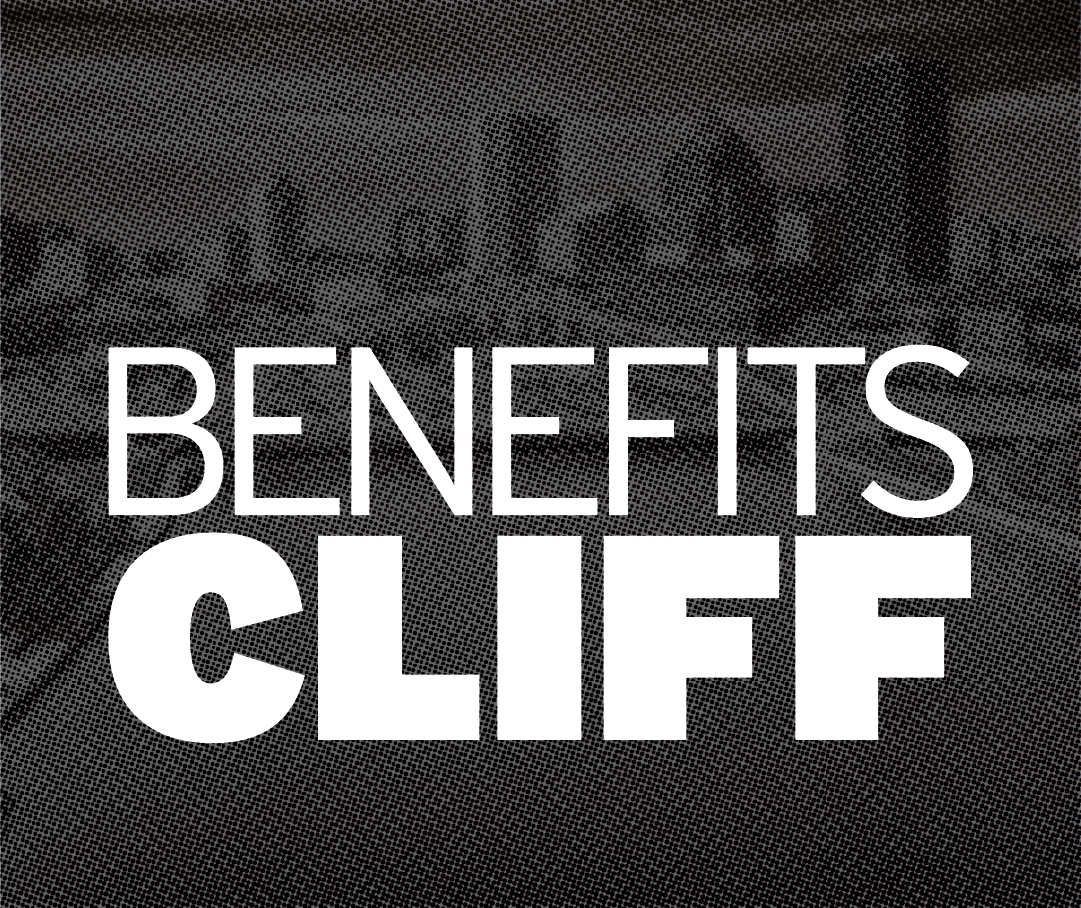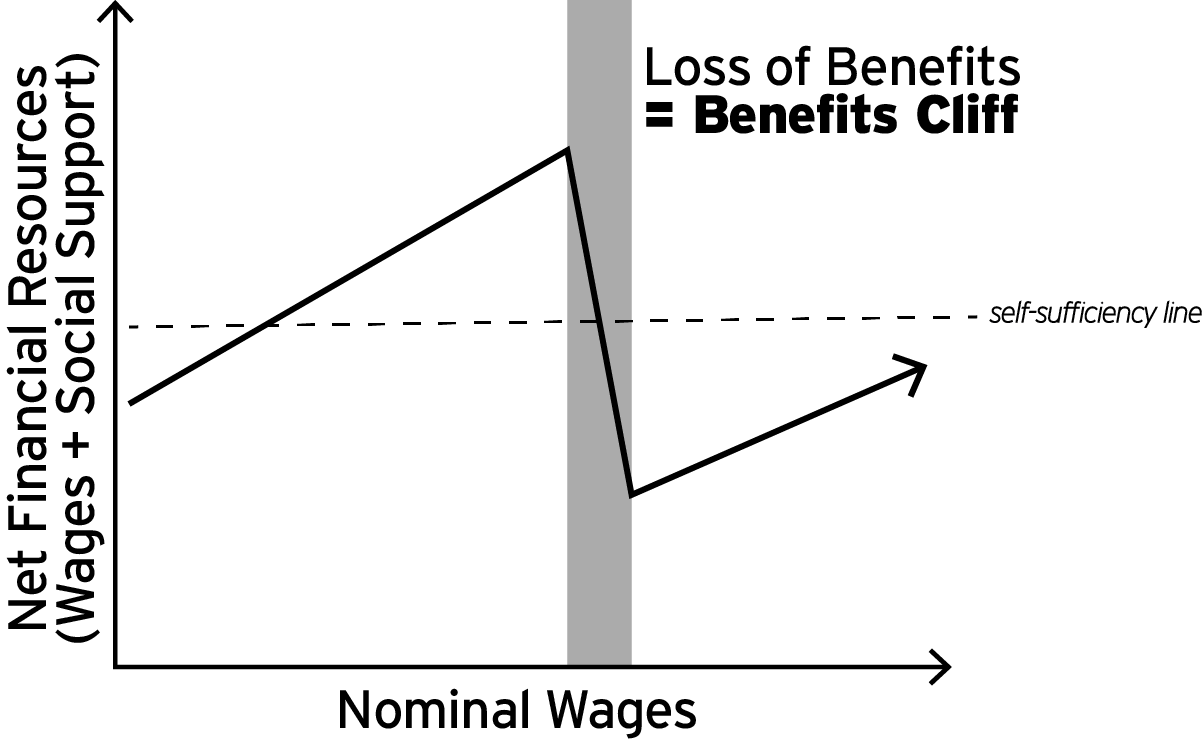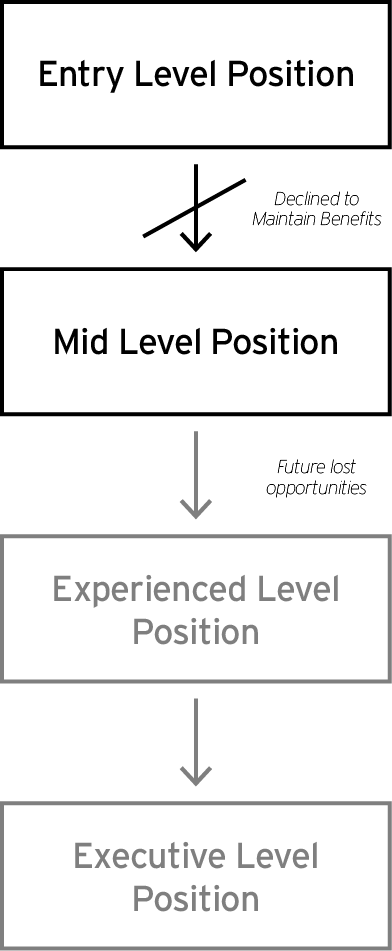The Benefits Cliff: Explained

Getting a raise at work should help you get ahead, not set you back. But right now, this isn’t the case for our most vulnerable populations.
With a raise pushing salary over an arbitrary number, you can end up losing access to the social support programs that help make ends meet. This is the benefits cliff: when employees earn wage increases causing them to lose support worth more, leading to fewer Net Financial Resources for them and their families.
The Federal Reserve Bank of Atlanta defines Net Financial Resources (NFR)  as (earned income + value of public benefits) – (major living expenses + income taxes). Practically, it’s a household’s ability to become financially stable, pay down debt, save money, and meet living expenses. When employees earn a raise, more hours, or a promotion, they often end up with a lower NFR if losing access to critical support programs such as housing choice vouchers, childcare subsidies, TANF, SNAP, Medicaid, and others. Without the support, the out of pocket costs for housing, childcare, and other services outweigh the wage benefits.
as (earned income + value of public benefits) – (major living expenses + income taxes). Practically, it’s a household’s ability to become financially stable, pay down debt, save money, and meet living expenses. When employees earn a raise, more hours, or a promotion, they often end up with a lower NFR if losing access to critical support programs such as housing choice vouchers, childcare subsidies, TANF, SNAP, Medicaid, and others. Without the support, the out of pocket costs for housing, childcare, and other services outweigh the wage benefits.
This is most severely affecting workers who are trying to make a difference in their lives and the lives of their families, leading to adverse impacts on our regional economy. A study from the Economic Policy Institute found that 70% of public benefits go to non-elderly employed individuals. The benefits cliff hits hardest on hardworking people who are looking for a better life. Additionally, benefits cliffs are most severe for families with children who have more to lose, as compared to single individuals.
 The benefits cliff has a far more severe impact than short term struggles faced by members of our community. The benefits cliff directly leads to cycles of generational poverty by keeping people stuck at the bottom. When employees have to turn down a promotion or a raise in order to maintain their benefits, they aren’t just losing out on this nominal wage increase, they’re losing out on career opportunities down the line that that lead to immeasurable income and personal and professional development opportunities.
The benefits cliff has a far more severe impact than short term struggles faced by members of our community. The benefits cliff directly leads to cycles of generational poverty by keeping people stuck at the bottom. When employees have to turn down a promotion or a raise in order to maintain their benefits, they aren’t just losing out on this nominal wage increase, they’re losing out on career opportunities down the line that that lead to immeasurable income and personal and professional development opportunities.
This further exacerbates workforce issues here in Greater Rochester as well as across the county. Employers across industries are facing labor shortages, and keeping employees in positions for which they are over-skilled and over-qualified for the sake of keeping their benefits is preventing workforce development efforts from having a meaningful impact on the talent pipeline. The US Chamber of Commerce further notes that addressing cliffs to promote employees’ economic mobility may help support workforce development and ensure that increased productivity is sufficiently incentivized.
According to the US Census Bureau, over 40 million people in the United States receive means-based assistance. The impact of the benefits cliff spreads far beyond Greater Rochester, but is felt profoundly here at home. For more information about Greater Rochester Chamber’s efforts to address the benefits cliff, please contact Chief of Staff Marc Cohen at Marc.Cohen@GreaterRochesterChamber.com.
